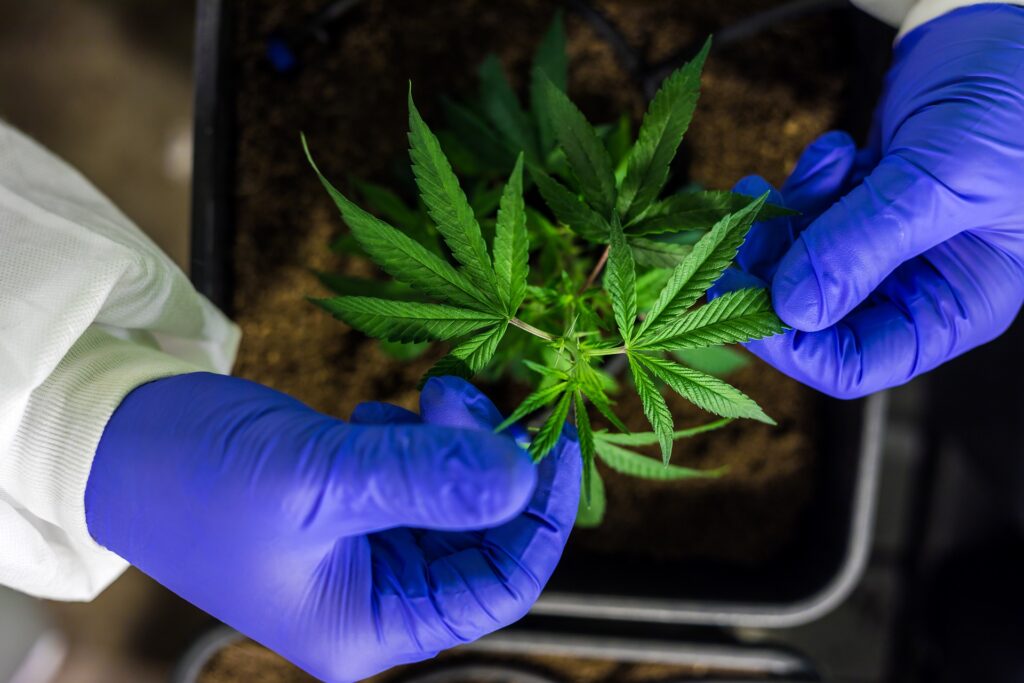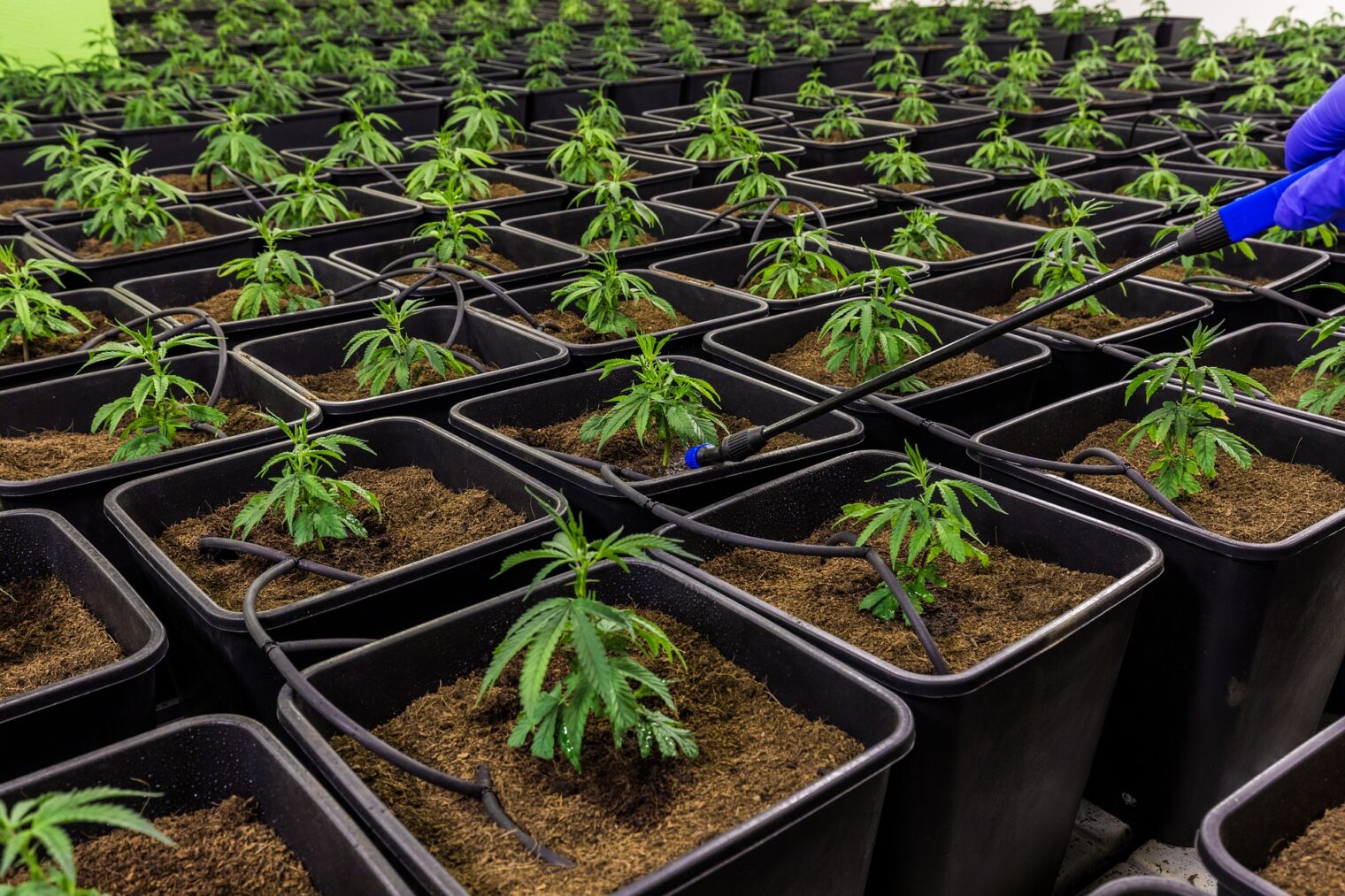Things You Need To Know About the Thailand Cannabis Cultivation Scene
The Thailand cannabis cultivation scene is now in the open for the first time in living memory. It’s a great time to be a Thai cannabis grower. The history of cannabis in Thailand is rich and deeply woven into the cultural fabric of the nation. Long before the global debates around legalization and the modern medical marijuana movements, cannabis had found its place in Thai tradition and medicine.
Historical records and local folklore both testify to cannabis being used in Thailand for centuries. From traditional medicines to culinary preparations, the plant had widespread applications. Particularly in rural regions, it wasn’t uncommon to find cannabis plants flourishing in household gardens, and the leaves and seeds were frequently employed in local dishes.
Moreover, traditional Thai medicine leveraged the therapeutic qualities of cannabis, especially in pain relief, appetite stimulation, and as a sleep aid. Elders in many communities still recount tales of how cannabis-infused balms and tinctures were used to alleviate various ailments.
However, influenced by global anti-cannabis movements, Thailand saw a shift in the 20th century. In 1979, the Thai government criminalized cannabis with the Narcotics Act, leading to its erasure from mainstream Thai culture and a hiatus in its cultivation.
Despite this hiatus, the roots of cannabis in Thailand run deep, reflecting a legacy of natural remedies, traditional practices, and local customs. With the current shift towards decriminalization and acceptance, Thailand cannabis cultivation is experiencing a renaissance, merging its rich past with a promising future.
Legal Landscape: Decriminalization and Current Regulations for Thailand Cannabis Cultivation
Thailand’s journey with cannabis legalization has been a testament to evolving understanding, economic potential, and a nod to its historical significance. The pivotal turn came in December 2018 when Thailand became the first Asian nation to legalize medical cannabis. This move was seen not just as progressive but also as a revival of the age-old ties the plant shared with the nation.
The process of legalization of Thailand cannabis cultivation began with a strict framework, mainly centered around medical use. Patients needed prescriptions, and cultivation was heavily regulated, reserved for specific licensed entities to ensure quality and safety standards.
However, the year 2021 saw a landmark decision when the Thai government removed cannabis from the Category 5 narcotics list. This move essentially decriminalized the possession and cultivation of cannabis under specific guidelines, heralding a new era for Thai cannabis enthusiasts and cultivators.
Today, households are permitted to grow a limited number of cannabis plants for personal use. Several businesses, too, have sprung up around the burgeoning cannabis industry, from spas offering cannabis-infused treatments to cafes serving hemp-based delicacies.
Still, it’s essential to be aware that while cultivation and possession within regulated limits are permitted, unauthorized sale and commercialization can result in penalties. As always, when navigating Thailand cannabis cultivation, knowledge of the current legal landscape is paramount.
Traditional vs. Modern Thailand Cannabis Cultivation Techniques
Thailand’s lush landscape and favorable climate have always made it an ideal location for cannabis cultivation. Over the centuries, traditional Thai farmers have honed techniques to maximize the yield and potency of their cannabis crops, adapting to the changing needs of the environment and the Thailand cannabis cultivation market.
Traditional Techniques:
Historically, Thai farmers have practiced organic cultivation, relying on the rich soil, seasonal rains, and the sun’s natural cycle. Without the aid of modern fertilizers or artificial lighting, these farmers developed a keen sense of when to plant and harvest for optimal potency and yield. Companion planting, a method where cannabis is grown alongside other crops to deter pests and enhance growth, was also commonly practiced.
Modern Techniques:
As the global demand for cannabis has increased and the legal framework in Thailand has evolved, there has been a shift towards more modern cultivation techniques. Today’s Thai cannabis farms might utilize hydroponic systems, controlled indoor environments, and scientifically formulated nutrients to optimize growth. These techniques, while more resource-intensive, allow for year-round cultivation and can yield plants with consistent cannabinoid profiles.
While both methods have their merits, it’s evident that the Thailand cannabis cultivation scene is a harmonious blend of the old and the new. The traditional wisdom of generations meets the advancements of modern science, creating a unique and thriving cannabis culture.
Key Regions: Thailand Cannabis Cultivation Farming Hotspots
The diversity of Thailand’s topography and climate has given rise to distinct cannabis-growing regions, each with its unique characteristics and cultivation practices. These key Thailand cannabis cultivation regions not only represent the heart of the nation’s cannabis industry but also the rich tapestry of cultures and traditions that have shaped its history.
1. Northern Highlands:
The mountainous regions of Northern Thailand, encompassing provinces like Chiang Mai and Chiang Rai, have long been synonymous with cannabis cultivation. The cooler temperatures, ample rainfall, and fertile soils here provide ideal conditions for robust cannabis plants. Historically, the hill tribes in these areas cultivated cannabis as a part of their traditional agricultural practices.
2. Northeastern Plateau:
Isaan, as it’s locally known, is Thailand’s largest region and offers a distinct climatic profile suitable for cannabis growth. While it faces challenges due to its more arid conditions, innovative water management and the region’s strong agricultural tradition have made it a noteworthy player in the cannabis scene.
3. Central Plains:
The central provinces, benefiting from the Chao Phraya river’s nourishment, have ventured into cannabis cultivation more recently, leveraging their expertise in rice and crop farming.
4. Southern Peninsula:
While not traditionally known for large-scale cannabis cultivation, the southern provinces have started exploring the crop’s potential, especially for hemp-based products, given the region’s tropical climate.
Each of these regions, with their unique strengths and challenges, contributes to the intricate mosaic of the Thailand cannabis cultivation scene, promising a future that’s both diverse and dynamic.
Strains and Varieties: What’s Growing in the Thai Soil?
The Thailand cannabis cultivation world is as varied as it is vast, with hundreds of strains, each boasting its unique profile of flavors, aromas, and effects. In Thailand, the confluence of traditional strains with modern hybrids has resulted in a rich spectrum of choices for both cultivators and consumers.
1. Thai Landraces:
Landrace strains are indigenous to specific regions, having evolved over centuries in their native environment. Thailand’s landraces are celebrated for their robust flavors and potent effects. The famed ‘Thai Stick’ is one such legendary strain, known for its energizing and cerebral high.
2. Modern Hybrids:
With the globalization of the cannabis industry, Thai cultivators have had access to a plethora of international strains. By cross-breeding these with local varieties, they’ve produced hybrids tailored to Thailand’s climate while offering a broader range of effects and flavors. Examples include crosses between Thai landraces and popular strains like Blue Dream or OG Kush.
3. Medicinal Strains:
Given the legal embrace of medical marijuana, there’s been a surge in cultivating strains rich in CBD, a non-psychoactive cannabinoid lauded for its therapeutic benefits. These strains prioritize medicinal properties over intoxicating effects.
4. Industrial Hemp:
Distinct from the psychoactive cannabis strains, hemp is cultivated for its fibrous stalks and low THC content. Thailand has recognized hemp’s economic potential, from textiles to health products.
Thailand’s cannabis palette is diverse and ever-evolving, a testament to its rich agricultural heritage and its modern, forward-looking approach to Thailand cannabis cultivation.

Sustainability and Environmental Impact: Cultivating with Consciousness
As the Thailand cannabis cultivation industry burgeons in Thailand, environmental sustainability has emerged as a central conversation. Cultivating cannabis, like any other agricultural endeavor, leaves an ecological footprint, and how this cultivation is managed can make the difference between environmental harmony and harm.
Water Consumption:
Cannabis is a thirsty crop. Especially in regions like Isaan, where water can be scarce, it’s essential to adopt efficient irrigation systems. Techniques like drip irrigation and rainwater harvesting not only conserve water but ensure that the plants receive a consistent supply.
Soil Health:
Organic farming practices, enriched by Thailand’s agricultural traditions, help maintain soil fertility and prevent degradation. Crop rotation, use of organic composts, and avoiding chemical pesticides and fertilizers ensure that the land remains productive for future generations.
Energy Consumption:
Modern indoor cultivation can be energy-intensive, especially when artificial lighting and climate control systems are used. By adopting energy-efficient technologies and harnessing renewable energy sources, growers can reduce their carbon footprint.
Local Biodiversity:
By preserving local landraces and promoting genetic diversity, Thai growers can ensure that the rich biodiversity of the region isn’t compromised.
The commitment to sustainability in the Thailand cannabis cultivation scene isn’t just about environmental consciousness. It’s a recognition of the intricate bond the land shares with its people. By cultivating responsibly, Thailand ensures that the green rush of today doesn’t come at the cost of tomorrow’s ecological balance.
The Way Forward: Future Prospects and Challenges for Thailand Cannabis Cultivation
Thailand’s entry into the global cannabis market has been both swift and significant, making it a burgeoning hub for cultivation and research in Southeast Asia. However, as with any nascent industry, the road ahead is filled with both opportunities and obstacles.
Opportunities:
Medical Research: Thailand’s decision to legalize medical marijuana has opened doors for extensive research. With its rich biodiversity, there is potential to discover strains with unique therapeutic benefits.
Global Market Access: As countries worldwide adopt more lenient cannabis policies, Thailand has the opportunity to become a key exporter, especially in medicinal and wellness products.
Tourism Boost: Given the global interest in cannabis, there’s potential for cannabis-centric tourism, with wellness retreats, educational tours, and more.
Challenges:
Regulatory Hurdles: The legal landscape for cannabis is still evolving in Thailand. Striking the right balance between regulation and freedom is crucial to ensure the industry’s growth while preventing misuse.
Standardization: As the market grows, ensuring the consistency and quality of products becomes vital. Adopting global best practices and rigorous testing standards is essential.
Sustainable Growth: Rapid expansion can strain resources. Ensuring the industry grows sustainably, without depleting the environment or marginalizing traditional growers, is a challenge that needs immediate attention.
In conclusion, the Thailand cannabis cultivation scene is poised at a crucial juncture. By addressing challenges head-on and leveraging its strengths, the nation can carve a niche for itself in the global cannabis tapestry, promising prosperity and progress for all stakeholders.


